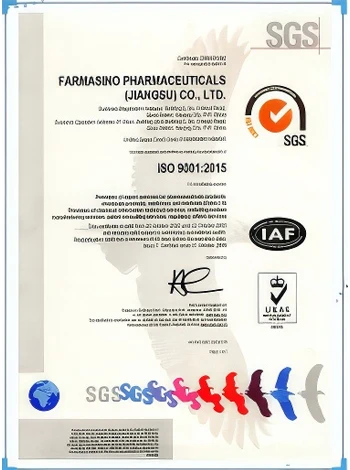



Chlorine Dioxide as an Effective Disinfectant for Various Applications
The Efficacy of Chlorine Dioxide for Disinfection A Comprehensive Overview
Chlorine dioxide (ClO2) is an increasingly popular disinfectant used in various industries and applications, ranging from water treatment to sanitation in healthcare and food processing. With heightened awareness of hygiene and the importance of effective disinfection methods, especially in the wake of global health crises, chlorine dioxide has emerged as a powerful tool in the fight against pathogens.
What is Chlorine Dioxide?
Chlorine dioxide is a yellow-green gas at room temperature and is known for its strong oxidizing properties. Unlike chlorine, chlorine dioxide does not form harmful chlorinated by-products during its reaction with organic matter, making it a safer alternative for disinfection in many scenarios. As a water-soluble molecule, chlorine dioxide can be easily dissolved in water, allowing for effective distribution in various formulations.
Mechanism of Action
The effectiveness of chlorine dioxide as a disinfectant hinges on its oxidation potential. When introduced to a contaminated surface or medium, chlorine dioxide destabilizes and destroys the cellular structure of bacteria, viruses, and fungi. This disruption of cellular integrity leads to the death or inactivation of the pathogen.
Chlorine dioxide operates by attacking the proteins and cellular membranes of microorganisms. The oxidizing nature of ClO2 damages essential sulfhydryl groups in enzymes and proteins, disrupting metabolic functions. Moreover, it can penetrate biofilms, which are protective layers formed by bacteria, thus proving highly effective against stubborn infections.
Applications of Chlorine Dioxide
1. Water Treatment Chlorine dioxide is widely used in municipal water treatment facilities. It proves efficient in eliminating a broad spectrum of pathogens, including bacteria, viruses, and protozoa. Its ability to reduce biofilms within water distribution systems further enhances its utility in maintaining water quality.
2. Healthcare Settings In hospitals and healthcare facilities, the proper disinfection of surfaces and medical equipment is crucial. Chlorine dioxide has been proven to reduce healthcare-associated infections when applied correctly. Its effectiveness against resistant strains of organisms such as MRSA (Methicillin-resistant Staphylococcus aureus) makes it an essential tool in infection control protocols.
chlorine dioxide for disinfection

3. Food Processing Chlorine dioxide is safely used in the food industry to sanitize surfaces and equipment. It is also employed to decontaminate fruits and vegetables, ensuring they are free of pathogens before reaching consumers. The FDA recognizes chlorine dioxide as safe for use in food processing when used under regulated conditions.
4. Air Disinfection The gaseous form of chlorine dioxide can be used to disinfect large areas, making it suitable for facilities such as schools, offices, and transportation hubs. It effectively reduces airborne pathogens and inactivates viruses, contributing to overall public health safety.
Advantages of Chlorine Dioxide
Chlorine dioxide offers several notable advantages over traditional disinfectants
- Broad Spectrum It is effective against bacteria, viruses, fungi, and protozoa, making it versatile for various applications. - No Harmful By-products Unlike chlorinated agents, chlorine dioxide does not generate harmful chloramines or trihalomethanes, making it safer for the environment and human health. - Effective in Presence of Organic Matter Chlorine dioxide retains its efficacy even in the presence of organic material, which often hinders the performance of other disinfectants.
Safety Considerations
While chlorine dioxide is a powerful disinfectant, it is important to handle it with care. In high concentrations, it can be toxic and irritate the respiratory system and skin. Therefore, it is crucial to adhere to safety guidelines and use appropriate personal protective equipment when working with chlorine dioxide.
Conclusion
Chlorine dioxide presents a robust solution for disinfection across various sectors, addressing the pressing need for effective strategies to combat pathogens in our environments. Its broad-spectrum efficacy, safety profile, and versatility establish it as a reliable disinfectant, particularly in an age where infection control is paramount. As research continues and regulations evolve, the applications and formulations of chlorine dioxide may expand, reinforcing its role in public health and safety. As always, understanding proper usage and adhering to safety protocols will be key to maximizing the benefits of this powerful disinfectant.
-
Why Sodium Persulfate Is Everywhere NowNewsJul.07,2025
-
Why Polyacrylamide Is in High DemandNewsJul.07,2025
-
Understanding Paint Chemicals and Their ApplicationsNewsJul.07,2025
-
Smart Use Of Mining ChemicalsNewsJul.07,2025
-
Practical Uses of Potassium MonopersulfateNewsJul.07,2025
-
Agrochemicals In Real FarmingNewsJul.07,2025
-
Sodium Chlorite Hot UsesNewsJul.01,2025










